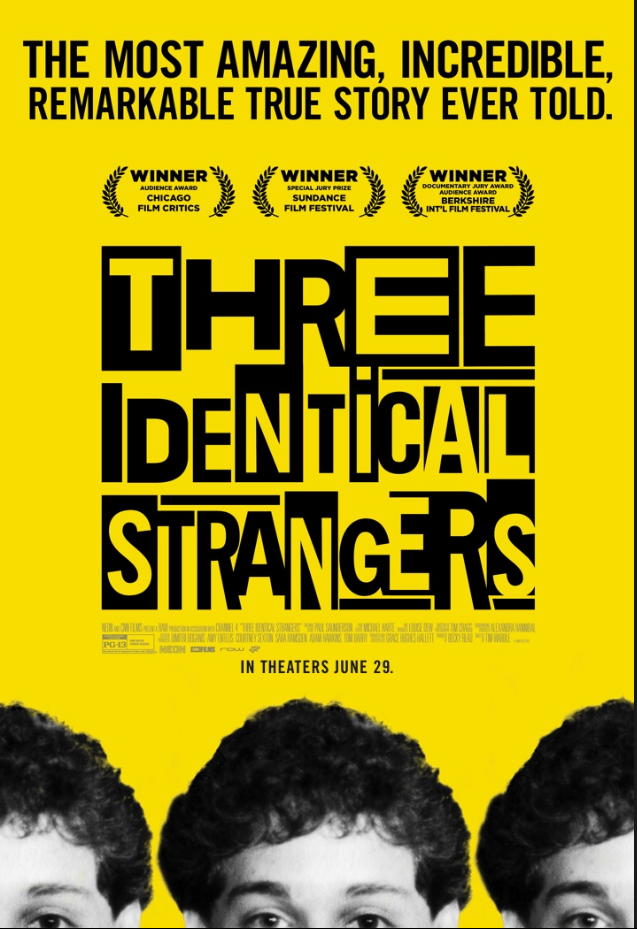In 1980, at 19-years-old, Robert Shafran expected to introduce himself to a sea of strangers as he started his first day at Sullivan County Community College.
Instead, he was met with warm welcomes and greetings – but they were greeting him by the wrong name, Shafran recalls in the trailer for the upcoming documentary “Three Identical Strangers.”
When he got to his dorm another student, Michael Domnitz, told him he must be a twin, noticing the striking resemblance between Shafran and his friend Edward Galland who had dropped out the year before.
It turns out Shafran wasn’t just a twin, he was a triplet.
The story of Shafran, raised in Scarsdale, Eddy Galland, raised in New Hyde Park and David Kellman, raised in Howard Beach, who were separated as infants, is told in the documentary which was released Friday but won’t play on Long Island until July 6.
The story may seem familiar to some who recall the triplet’s tabloid fame when their story first broke in the 1980s. They had an appearance on the “Phil Donahue Show” and in the movie “Desperately Seeking Susan.”
Although on the surface the story is a feel-good piece about three young men finding new family, director Tim Wardle’s documentary digs into the harrowing psychological experiment that was the triplet’s upbringings.
A study lead by Peter Neubauer led to the separation of the boys after they spent six months at the adoption agency Louise Wise Services, according to the New York Post, which also reported they had been born to a teenage mother on July 12, 1961 at Hillside Hospital in Glen Oaks.
The boys were each placed in a New York home with a different socioeconomic class; Kellman to a working class family, Galland to a middle class family and Shafran to an upper middle class family.
The alleged purpose was to solve the age-old psychological question: nature versus nurture.
None of the adoptive parents were told about their new son’s siblings.
The agency merely told the parents the children were part of a “routine childhood development study,” according to the New York Post.
“They approached other agencies to be part of the study, and [were told], ‘You can’t split up twins and triplets — what are you thinking?’” Wardle told the New York Post. “Even at the time, it was pretty extreme.”
The boys were visited by research assistants for the first 10 years of their lives.
Wardle told the New York Post it appears researchers continued to study and collect data on the triplets’ progress rom afar for years after.
The triplets’ could have suffered damage from the early separation. Their adoptive parents recall all three boys banging their heads against their cribs in distress, according to the New York Post.
“It was absolutely separation anxiety,” Kellman told the New York Post.
The controversial study may have even caused lasting damage; in 1995 Galland killed himself.
The full extent of the study is still unknown and will remain that way for almost another 50 years.
When Neubauer died at 94 in 2008 he ordered all documents relating to the study to be placed at Yale University and restricted until 2065, according to the New York Post.
It leaves everyone who knows about the case, including the subjects themselves, with no answers to their many questions.
“What did you do,” Kellman is seen asking in the movie trailer. “And how could you?”
Reach reporter Rebecca Klar by email at rklar@theislandnow.com, by phone at 516-307-1045, ext. 204, or follow her on Twitter @rebeccaklar_.



